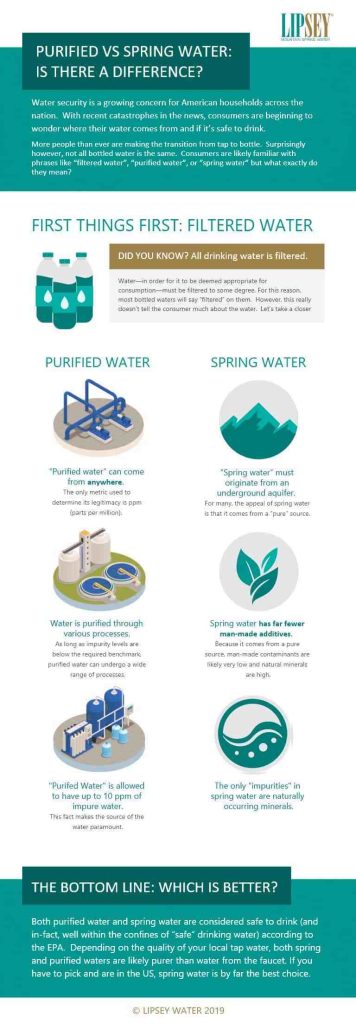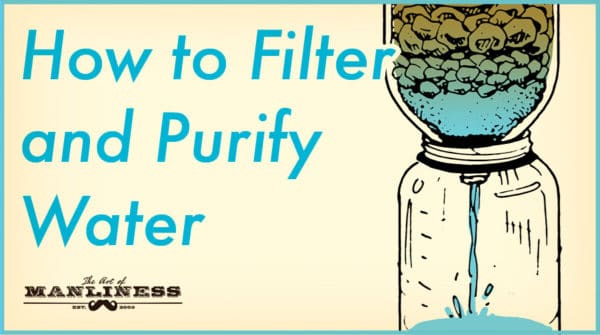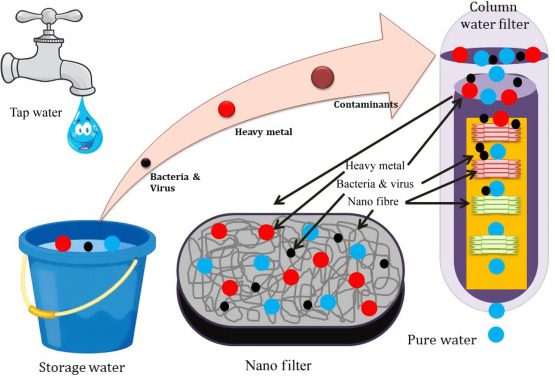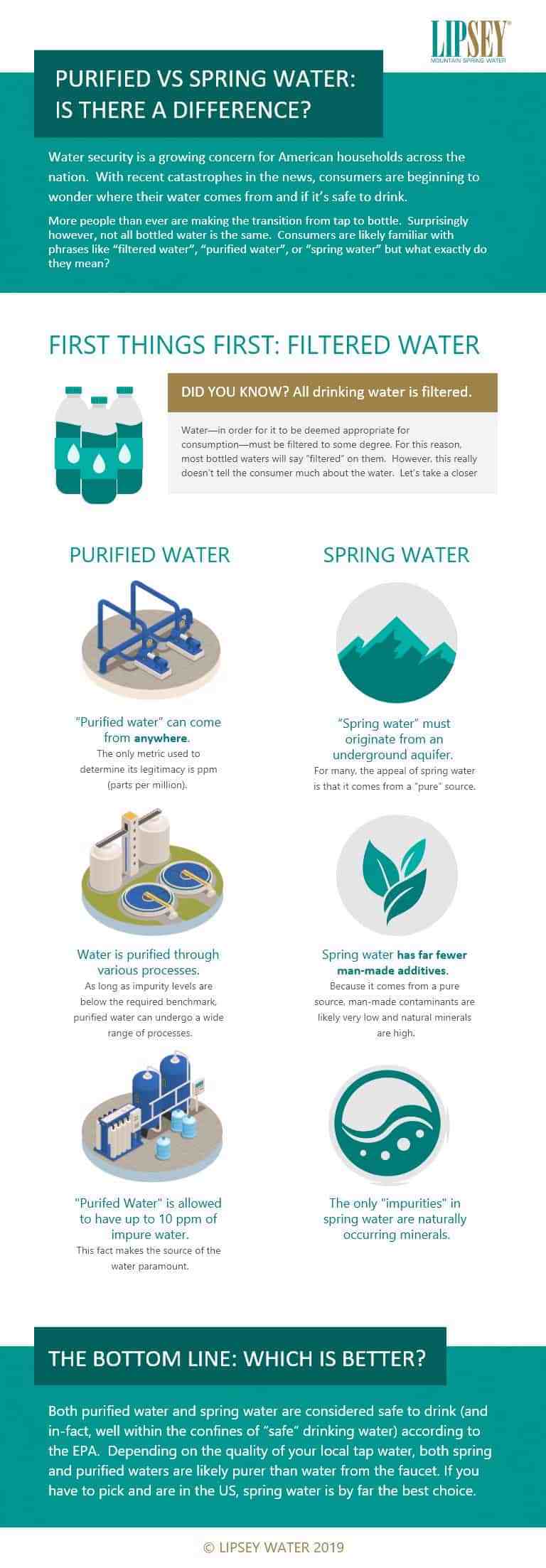When it comes to quenching your thirst, the quality of the water matters. But with so many options available, it’s easy to get overwhelmed. In an attempt to simplify things, this article explores the age-old debate: is it better to filter or purify water? By examining the benefits and drawbacks of each method, you’ll be armed with the knowledge you need to make an informed decision about the water you drink. So grab a glass and let’s dive into the fascinating world of water treatment!


This image is property of lipseywater.com.
Benefits of Filtering Water
Removes Large Particles
Filtering water has numerous benefits, starting with the removal of large particles. When water is sourced from lakes, rivers, or wells, it may contain visible impurities such as dirt, sand, and debris. By passing the water through a filtration system, these particles are effectively removed, resulting in cleaner and clearer water. This not only enhances the aesthetic appeal of the water but also prevents these particles from accumulating in pipes and appliances, improving their longevity.
Improves Taste and Odor
One of the most noticeable benefits of filtering water is the improvement in taste and odor. Tap water, especially in areas with high chlorine levels, can have an unpleasant smell and taste. Filtering the water helps to reduce the presence of chlorine, as well as other impurities that contribute to the off-putting taste and odor. By removing these compounds, filtered water becomes more enjoyable to drink, increasing your overall hydration and water consumption.
Filters out Sediments
In addition to removing large particles, water filters are effective at capturing sediments. Sediments such as rust, sand, and silt can contaminate water supplies and make them appear cloudy or discolored. By utilizing a filtration system, these sediments are removed, resulting in crystal-clear water. This not only enhances the aesthetics, but also ensures that the water is safe to use for various purposes such as cooking and washing.
Removes Chemical Contaminants
Filtering water can also effectively remove chemical contaminants that may be present in the water supply. Common contaminants such as lead, mercury, pesticides, and volatile organic compounds (VOCs) can pose health risks when consumed. By utilizing advanced filtration methods, these harmful substances are trapped and removed, resulting in cleaner and healthier water. This is especially vital for households with infants, pregnant women, or individuals with compromised immune systems who are more susceptible to the adverse effects of these contaminants.
Different Types of Water Filters
Activated Carbon Filters
Activated carbon filters are widely used for water filtration due to their effectiveness in removing various impurities. These filters contain a highly porous carbon material that can adsorb contaminants such as chlorine, chemicals, and odors. Additionally, activated carbon filters can improve the taste and odor of water, making it more palatable. They are commonly used in faucet-mounted filters, pitcher filters, and under-sink filters.
Reverse Osmosis Filters
Reverse osmosis filters utilize a semi-permeable membrane to remove impurities from water. The membrane allows pure water molecules to pass through while trapping dissolved solids, chemicals, bacteria, and viruses. This filtration method is highly effective in removing contaminants, including heavy metals and bacteria. Reverse osmosis filters are commonly installed under the sink and provide a reliable source of purified water.
Ceramic Filters
Ceramic filters are another popular option for water filtration. These filters consist of a porous ceramic material that effectively removes sediments, bacteria, and cysts from water. Ceramic filters are often combined with activated carbon to enhance their contaminant removal capabilities. They are commonly used in portable water filters, countertop systems, and gravity-fed filters.
UV Filters
UV filters utilize ultraviolet light to disinfect water and kill microorganisms such as bacteria and viruses. The UV light damages the DNA of these microorganisms, rendering them harmless. UV filters are particularly effective in treating waterborne diseases and are commonly used in combination with other filtration methods to provide comprehensive water treatment.
Limitations of Water Filters
May Not Remove Microorganisms
While water filters offer various benefits, it is important to note their limitations. One limitation is that certain types of filters may not effectively remove all microorganisms from water. For example, activated carbon filters and ceramic filters are not capable of removing bacteria and viruses. To ensure complete removal of microorganisms, it is necessary to supplement these filters with additional purification methods.
Filter Needs Regular Replacement
Water filters require regular maintenance and replacement to ensure optimal performance. Over time, the filter media can become saturated with contaminants, reducing its effectiveness. Manufacturers usually provide guidelines on the recommended filter replacement schedule, which typically ranges from every three to six months. Regularly replacing the filter is essential for maintaining the quality of filtered water and preventing the growth of bacteria within the filter.
Not Effective Against Dissolved Salts
Water filters are not designed to remove dissolved salts, such as those found in hard water. While they can remove larger particles and certain chemical contaminants, dissolved salts remain in the water even after filtration. To address issues related to hard water and high mineral content, alternative treatment methods such as water softeners or reverse osmosis filters are required.
Limited Effect on Heavy Metals
While some water filters can effectively remove certain heavy metals, such as lead and mercury, not all filters are capable of doing so. It is important to carefully consider the specific contaminants you want to target when choosing a water filter. If heavy metals are a concern, selecting a filter with specialized media or opting for a reverse osmosis system may be necessary.
Benefits of Purifying Water
Kills Harmful Microorganisms
Purifying water offers several advantages, beginning with the ability to kill harmful microorganisms. Purification methods such as boiling, chlorination, and UV treatment effectively destroy bacteria, viruses, and parasites. This makes the water safe for drinking, minimizing the risk of waterborne diseases such as cholera, dysentery, and giardiasis.
Removes Viruses and Bacteria
Water purification methods are specifically designed to eliminate viruses and bacteria, ensuring the water is free from these microscopic pathogens. Viruses, in particular, can be a persistent threat in some water sources, as they can survive for extended periods and cause severe illnesses. Purification methods such as distillation and UV treatment provide reliable means of eliminating these microorganisms, resulting in safe and potable water.
Effective Against Chemicals and Heavy Metals
In addition to microorganisms, water purification methods are effective at removing chemical contaminants and heavy metals. Boiling water, for example, can eliminate volatile organic compounds (VOCs) and certain chemicals. Distillation removes dissolved solids, heavy metals, and other contaminants, providing purified water. These purification methods are particularly beneficial for individuals living in areas with known water contamination issues.
Suitable for Emergency Situations
Water purification is highly advantageous during emergency situations, such as natural disasters or when access to safe drinking water is limited. Purification methods such as boiling or using water purification tablets can provide a quick and reliable solution to make water safe for consumption. These methods do not require complex equipment and can be performed using readily available resources, making them invaluable in times of need.


This image is property of content.artofmanliness.com.
Different Methods of Water Purification
Boiling
Boiling water is one of the oldest and simplest methods of water purification. By bringing water to a rolling boil for at least one minute (or three minutes at higher altitudes), the heat kills bacteria, viruses, and parasites. Boiling is an effective method for emergency water purification and can easily be done with a heat source, such as a stove or campfire.
Chlorination
Chlorination involves adding chlorine to water to disinfect it and kill microorganisms. Chlorine is a widely used and reliable disinfectant that effectively eliminates bacteria, viruses, and parasites. Water treatment facilities often use this method to ensure the safety of the water supply. Chlorine tablets or drops can also be used for personal water treatment during outdoor activities or in emergency situations.
Distillation
Distillation is a purification method that involves heating water to create steam and then condensing the steam back into liquid form. This process effectively removes impurities, including bacteria, viruses, heavy metals, and dissolved solids. Distilled water is pure and free from contaminants, making it suitable for various applications, such as medical use or laboratory settings.
Water Purification Tablets
Water purification tablets are portable and convenient methods of water treatment. These tablets contain chemicals such as chlorine or iodine, which disinfect the water and kill microorganisms. They are easy to use, as you simply add the tablet to the water and wait for the specified amount of time for the chemicals to take effect. Water purification tablets are particularly useful for backpacking, camping, and emergency preparedness.
Limitations of Water Purification
Does Not Remove Sediments
Water purification methods, such as boiling and chemical disinfection, focus primarily on killing microorganisms and removing chemical contaminants. However, these methods do not effectively remove sediments or particles from water. If the water source contains visible impurities, additional filtration methods or pre-treatment may be required to ensure the water is free from sediments.
Taste may be Affected
Certain water purification methods, such as boiling, can alter the taste of water. Boiled water may taste flat or slightly different due to the removal of dissolved gases. Chlorination can also affect the taste, leaving behind a slight chlorine flavor in the water. While these alterations are generally safe, some individuals may find the taste less desirable. To improve the taste, allowing the water to stand for a short period or aerating it can help dissipate any unwanted flavors.
Not Ideal for Large Quantities
Water purification methods, particularly those that involve boiling or using purification tablets, may not be practical for treating large quantities of water. Boiling water can be time-consuming and requires a heat source and appropriate container. Similarly, using purification tablets for large volumes of water can be tedious and costly. Purification methods should be considered based on the quantity of water needed and the available resources.
Requires Time and Energy
Water purification methods generally require time and energy to carry out the necessary steps. Boiling water, for instance, requires bringing the water to a rolling boil and then allowing it to cool before consumption. Using chemical disinfection methods also requires waiting for the specified contact time. These additional steps may not be ideal for individuals seeking immediate access to safe drinking water or during situations where time and energy are limited.


This image is property of ars.els-cdn.com.
Comparing Filtering and Purification
Effectiveness
When comparing filtering and purification methods, both have their strengths in terms of effectiveness. Filtering is highly efficient in removing large particles, improving taste and odor, and reducing chemical contaminants. It is suitable for day-to-day water filtration needs. On the other hand, purification methods excel in killing harmful microorganisms, removing viruses and bacteria, and eliminating chemical contaminants and heavy metals. Purification is crucial when dealing with potentially contaminated water sources or during emergency situations where safety is paramount.
Convenience
In terms of convenience, filtering generally requires less effort and time compared to purification methods. Water filters can be easily installed on faucets, attached to pitchers or dispensers, or integrated into existing plumbing systems. Once installed, they provide a continuous supply of filtered water without the need for additional steps or waiting time. Purification methods, such as boiling or chemical disinfection, require manual intervention and specific procedures. These methods may be more suitable for occasional use or when immediate access to safe water is not available.
Cost
The cost of filtering and purifying water varies depending on the method and the specific product chosen. Water filters can range from inexpensive pitcher filters to more advanced under-sink or whole-house filtration systems. The cost of replacement filters should also be considered. Purification methods such as boiling and chlorination are generally more affordable upfront, as they require minimal equipment. However, the costs may accumulate over time with the need for ongoing fuel or chemical purchases. Advanced purification systems, such as distillation units or UV filters, may require a higher upfront investment but offer long-term cost savings.
Environmental Impact
From an environmental standpoint, filtering water is often considered more sustainable compared to purification methods. Water filters generally do not use electricity, chemicals, or produce waste byproducts during the filtration process. They can be used repeatedly, with the filter cartridges being replaced periodically. Purification methods that rely on boiling or chemical treatment may require energy consumption or generate waste, such as empty chlorine containers. However, the environmental impact of purification methods can be mitigated by selecting energy-efficient appliances and properly disposing of any generated waste.
Effectiveness
Filtering
Water filtering is highly effective in removing large particles, improving taste and odor, and reducing chemical contaminants. It is particularly beneficial for removing visible impurities, such as dirt, debris, and sediments. Advanced filtration systems, such as activated carbon and reverse osmosis filters, can provide comprehensive removal of various contaminants, including heavy metals and certain chemical compounds. However, it is important to consider the specific contaminants the filter is designed to remove, as not all filters are equally effective against all types of impurities.
Purification
Water purification methods, such as boiling, chlorination, distillation, and UV treatment, are highly effective in killing harmful microorganisms and removing viruses, bacteria, and parasites. They are specifically designed to provide safe and potable water, making them essential in areas with unreliable or contaminated water sources. Purification methods also effectively remove chemical contaminants and heavy metals, ensuring the water is free from these pollutants. However, like filtering, the effectiveness of purification methods can vary depending on the specific method used and the quality of the water source.


This image is property of i0.wp.com.
Convenience
Filtering
Water filtering is generally convenient and user-friendly. Once the filtration system is installed, it provides a continuous supply of filtered water without requiring manual intervention. Faucet-mounted filters and pitcher filters are particularly convenient as they are easily accessible and can be used for immediate hydration. Under-sink filters provide a seamless integration with existing plumbing systems, supplying filtered water directly from the tap. Filtering is suitable for day-to-day use and offers a reliable solution for maintaining clean and great-tasting water.
Purification
Purification methods may require more effort and time compared to filtering. Boiling water, for example, requires bringing the water to a rolling boil and then allowing it to cool before consumption. Chlorination involves adding chemicals and waiting for the specified contact time. Distillation involves heating the water to create steam and condensing it back to liquid form, which can be a lengthier process. While purification methods are effective in providing safe drinking water, they may not be as convenient for immediate use or in situations where time and energy are limited.
Environmental Impact
Filtering
Filtering water generally has a lower environmental impact compared to purification methods. Water filters do not require electricity or additional chemicals to operate, making them more energy-efficient and sustainable. The filter cartridges can often be recycled or sent back to the manufacturer for proper disposal. Some filters even utilize biodegradable materials, further reducing their environmental footprint. The long lifespan of filters also minimizes waste generation, making water filtering an eco-friendly choice.
Purification
Purification methods, particularly those involving boiling or chemical treatments, may have a higher environmental impact. Boiling water requires energy consumption, whether from fossil fuels or electricity. Chemical disinfection methods, such as chlorination, require the use and subsequent disposal of chemicals, which can contribute to environmental pollution if not properly handled. However, advanced purification methods such as UV filters or distillation units can help mitigate these issues by reducing energy consumption and minimizing waste generation.
In conclusion, deciding between filtering and purifying water depends on various factors such as the desired level of contaminants removed, convenience, cost, and environmental impact. Water filters are highly effective in removing large particles, improving taste, and reducing chemical contaminants. They are convenient for everyday use and offer a sustainable option for maintaining clean water. However, they may not completely eliminate microorganisms and have limitations in removing dissolved salts and heavy metals. On the other hand, water purification methods, such as boiling, chlorination, distillation, and UV treatment, are effective in killing harmful microorganisms and removing viruses, bacteria, and chemicals. They are particularly beneficial for emergency situations and areas with contaminated water sources. However, purification methods may require more time and energy, alter the taste of water, and may not be practical for large quantities of water. Careful consideration of the specific needs and priorities will help determine whether filtering or purifying water is the better option for you.


This image is property of www.freedrinkingwater.com.




